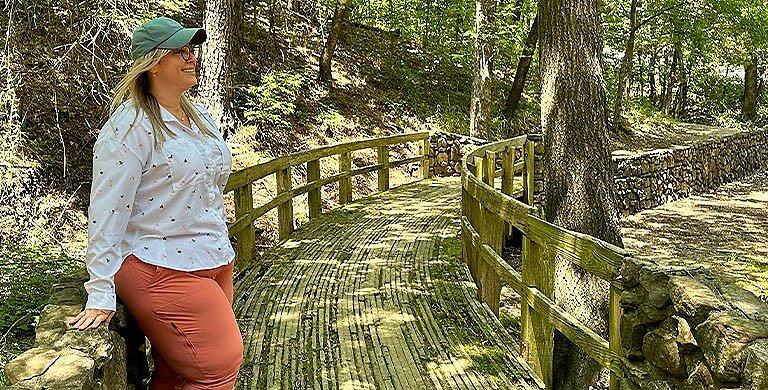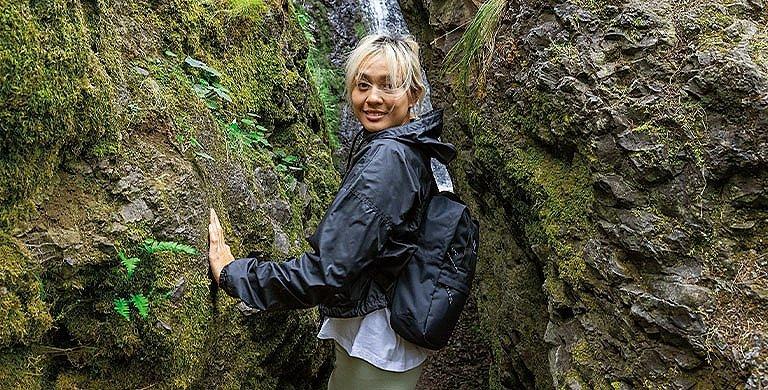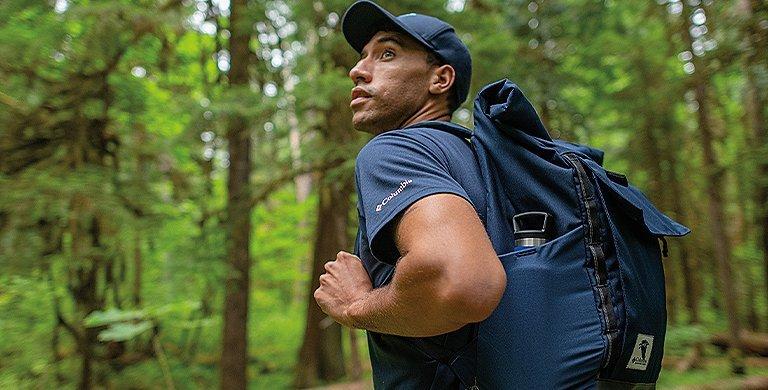HIKING
How to Clean Hiking Boots
A footwear designer explains how to take proper care of your trail shoes
BY TROY ASPLUND
There’s nothing like a pair of perfectly broken in hiking boots. They’re your loyal outdoor companions, logging mile after mile through changing weather conditions and unpredictable terrain with zero complaints. When it’s time to rest, they wait patiently outside your tent all night while you recharge, ensuring they’re ready to go the second you are. But all that dirt, mud, and gravel you subject them to can eventually take a toll, building up and affecting both performance and how many hikes they’ll be around for. So if you want them to keep taking care of you, you have to take care of them.
But what’s the right way to clean hiking boots? Do you really even need to clean them? And if so, how often? Can you wash hiking boots in the washing machine? (SPOILER: Don’t.)
To get the answers to questions like these and find out how to clean and care for your trusty hikers, we talked to Shannon Elliott, footwear design director for Columbia Sportswear.
But what’s the right way to clean hiking boots? Do you really even need to clean them? And if so, how often? Can you wash hiking boots in the washing machine? (SPOILER: Don’t.)
To get the answers to questions like these and find out how to clean and care for your trusty hikers, we talked to Shannon Elliott, footwear design director for Columbia Sportswear.
How often should I clean my hiking boots?
There’s something to be said for the “outdoors cred” that a little dirt and dried mud can bring to your favorite hiking boots. But too much of a good thing can be a bad thing.
“For people who hike regularly, the only reason to clean hiking boots would be to use leather conditioning, which can be done every two years,” Elliott explains. On the rare occasion you are traveling internationally with your boots, customs does require them to be free of dirt and seeds so as not to potentially spread invasive plants. “Other than this, most experienced hikers just use a damp towel, or a dry towel, or a dry toothbrush to brush off their boots if they get too dirty.”
“For people who hike regularly, the only reason to clean hiking boots would be to use leather conditioning, which can be done every two years,” Elliott explains. On the rare occasion you are traveling internationally with your boots, customs does require them to be free of dirt and seeds so as not to potentially spread invasive plants. “Other than this, most experienced hikers just use a damp towel, or a dry towel, or a dry toothbrush to brush off their boots if they get too dirty.”
Can hiking boots be washed in the washing machine?
“No,” Elliott answers simply. “Washers and dryers can damage your boots. The detergent plus heat and spinning will break down the adhesives used in manufacturing, which hold the structure of your boots together, and there is potential to have the adhesive melt so much that the sole of the shoe separates from the upper.” This is true for just about any footwear. So whether hiking boots or hiking shoes, leather hikers or synthetic ones, just pretend your washer and dryer don’t exist.
What are the best ways to clean hiking boots?
Elliott explains, “You really don’t need fancy equipment to clean hiking boots.” All you need is a boot brush, or even an old toothbrush, and some mild soap. You can use a boot cleaner or saddle soap, but a mild solution of dish soap will work just fine as well. When it comes to drying your boots, avoid any sort of heat source, which can damage your hikers. “Instead, store your hiking shoes out in the open air in a dry place that is not exposed to sun,” Elliott advises. And if your boots are full-grain leather, a regular application of leather conditioner will help keep them performing at their best.
How do I know when my hiking boots need to be cleaned?
When your boots are in real need of a little TLC, you’ll know. Your eyes, or even your nose, will tell you. But the time you really need to clean them off is when the dirt is affecting performance, like when dried, caked-on mud reduces your outsole’s traction.
“You can bang the bottoms of the boots together to remove unwanted, caked-on mud,” advises Elliott. “This is important to ensure that the traction geometry (lugs) will continue to perform their best.” An old toothbrush can be used to dry-brush mud or dislodge pebbles from the outsole. And if the mud buildup is really extreme, you can elicit the help of your garden hose.
“You can bang the bottoms of the boots together to remove unwanted, caked-on mud,” advises Elliott. “This is important to ensure that the traction geometry (lugs) will continue to perform their best.” An old toothbrush can be used to dry-brush mud or dislodge pebbles from the outsole. And if the mud buildup is really extreme, you can elicit the help of your garden hose.
What are the negative effects of not taking proper care of your hiking boots?
While regularly cleaning your hikers isn’t completely necessary, never cleaning them can affect everything from fit to performance to longevity. For example, mud can suck moisture from leather as it dries, which can lead to dry, cracked leather and boots that will need to be replaced that much sooner. Elliott points out another example. “If your boots get too wet and then sun dry, they may not fit as well the next time they’re used because they’ll have shrunk, thus affecting fit and performance.”
How do you clean waterproof hiking boots?
“Because waterproof boots will not absorb water, they can be washed more generously, like with a well-directed garden hose,” Elliott says. But she reminds us once again not to put them into a washing machine or dryer.
If you notice that water has stopped beading up on your waterproof boots, they may need to be re-waterproofed. The main thing to know is that when applying a waterproof treatment, the boots must be wet in order for the treatment to be effective. Other than that, follow the instructions on the waterproof treatment packaging and you’ll be back in dry business in no time.
If you notice that water has stopped beading up on your waterproof boots, they may need to be re-waterproofed. The main thing to know is that when applying a waterproof treatment, the boots must be wet in order for the treatment to be effective. Other than that, follow the instructions on the waterproof treatment packaging and you’ll be back in dry business in no time.
What about synthetic hiking shoes? Is it a different cleaning process or the same?
“Recreational day hikers may want to clean their light hiking shoes if they wear them also as everyday shoes for fashion and for function,” notes Elliott. “Cleaning the synthetic materials of your hiking shoes is similar to cleaning your leather hiking boots. Spot clean when desired and never put into the washer or dryer unless the shoe is marketed as washable.”
How do you clean and deodorize hiking boots?
“Cleaning and deodorizing your boots on the inside is really pretty simple, explains Elliott.”
“Hiking shoes don’t require special sprays or deodorizers. But if boots get really gnarly, you could spray [disinfectant spray] into the boot and let it dry before wearing. Or sprinkle baking soda inside, let it sit overnight, then shake it out before wearing again.”
“Hiking shoes don’t require special sprays or deodorizers. But if boots get really gnarly, you could spray [disinfectant spray] into the boot and let it dry before wearing. Or sprinkle baking soda inside, let it sit overnight, then shake it out before wearing again.”
How do you clean boots with fur or faux fur?
Elliott explains that fur or faux fur are not really found on performance hiking footwear, but you may find it on some women’s winter boots. In that case, you can spot clean with a mild dish soap and a little water. Again, avoid using the washer and dryer—the dryer heat will melt the faux fur.
Are your boots past the point of cleaning? Check out hiking boots and shoes for something brand-new.



